Sjogren's syndrome
English: Sjogren's syndrome
definition
Sjögren's syndrome (also known as Sjögren-Larsson syndrome) was first described in 1933 by the Swedish ophthalmologist Henrik Sjögren. It is a dryness of the eyes and the mouth in connection with a rheumatic disease, chronic polyarthritis.

introduction
Sjögren's syndrome is an autoimmune disease that was first described in 1933, in which the body's own immune system is directed primarily against salivary and lacrimal glands. It belongs to the so-called collagenoses.
Sjögren's syndrome brings symptoms such as
- dry eye (leading symptom),
- dry mucous membranes in the mouth, nose and throat as well as
- Joint discomfort with it. The cause of the occurrence of this disease is still unknown today.
The disease is detected by means of a blood test in which autoantibodies, i.e. antibodies against your own body, are detected.
Treatment has been difficult to this day due to the unexplained causality. The complaints are treated: eye drops for dry eyes, drinking a lot against dry mouth, painkillers and painful joint involvement. In addition, anti-inflammatory drugs can also be used.
The prognosis is generally good, but it depends on the comorbidities.
What is the classification of Sjogren's syndrome?
- Eye discomfort
At least one positive answer to one of the questions 1-3 in the catalog of questions attached below.
- Discomfort in the mouth area
At least one positive answer to one of the questions 4-6 in the catalog of questions attached below.
- Eye findings
Positive Schirmer or Rose-Begal test.
- Tissue findings
At least 1 lymphoid cell focus (> 50 mononuclear cells) per 4 mm² of salivary gland tissue
- Salivary gland involvement
At least one positive result in the following 3 tests:- Salivary gland scintigraphy,
- Parotid sialography
- unstimulated salivation (<1.5 ml / 15 minutes).
- Autoantibody detection
At least one positive result:- SS-A / Ro or SS-B / La antibodies
- Antinuclear Antibodies (ANA)
- Rheumatoid factors
If there are diseases such as lymphoma, AIDS, sarcoid or graft-versus-host disease, these classification criteria are not used.
If the diseases mentioned above are not present and no other rheumatic diseases are known, there is a probability of over 90% that primary Sjögren's syndrome is present as soon as 4 of the 6 criteria are met (point 6 only indicates that it is present of SS-A / Ro antibodies obligatory).
If another (rheumatic) disease (such as rheumatoid arthritis (rheumatoid arthritis), lupus erythematosus or scleroderma) is known, there is a 90% probability that secondary Sjögren's syndrome is present if the first or second criterion is met and the sixth criterion and two of criteria 3, 4 and 5 are met.
It is discussed that the diagnosis of secondary Sjögren's syndrome can be considered confirmed as soon as typical symptoms (such as drought problems) and SS-A / Ro or SS-B / La antibodies exist. Under these circumstances, it is not absolutely necessary to carry out further examinations such as a lip biopsy.
Recognizing Sjogren's Syndrome
Living with Sjogren's Syndrome.
The main complaints of the affected patients are dryness of the eyes, mouth and other mucous membranes.
- Eye involvement:
Physiologically, the surface of our eyes is wetted by the tear film. The tear film consists of different components, which are released from different glands.
If this tear film is insufficient, the image of the "dry eye" arises.
The following features are typical:If these symptoms occur and cannot be explained by allergies or the like, Sjögren's syndrome should also be considered.
- Eyes dryness
- Foreign body sensation in the eyes ("Sand in the eye“)
- Red and sore eyes
- increased tears in the eyes
- Mouth involvement:
Not only the lacrimal gland is affected, but also the salivary glands, which are responsible for the secretion of saliva into the oral cavity (Parotid, jaw and tongue salivary glands).
The following symptoms occur here:- Dryness in the mouth and throat
- Frequent drinking
- Inflammation of the mucous membrane and gums
- Other corporate bodies:
Other mucous membranes in the body can also be affected: the nose, windpipe and bronchi. Organ involvement includes, for example: joints, muscles and lungs. Other organs are rarely to very rarely affected.
Also read: Pain at the tip of the tongue
How is Sjogren's Syndrome diagnosed?
The suspicion is expressed by the doctor, usually an ophthalmologist, ENT specialist or dentist, based on the complaints described.
Antibody tests are carried out to ensure the diagnosis. Here the autoantibodies SS-A and SS-B, which are typical for Sjögren's syndrome, are detected.
A detailed article on many different autoantibodies and the autoimmune diseases caused by them can be found at: Autoantibodies
How does the doctor inquire about Sjogren's syndrome?
- Have you suffered from daily, stressful dry eyes and mouth for more than three months?
- Do you often feel a foreign body (sand) in your eyes?
- Do you use tear substitutes more than 3 times a day?
- Have you suffered from daily dry mouth for more than three months?
- As an adult, did you experience recurrent or permanent swelling of the salivary glands?
- Are you forced to have a drink to swallow dry food?
Can Sjogren's Syndrome have a headache?
In addition to the classic symptoms of Sjogren's syndrome, such as dry mouth and dry eyes, those affected can suffer from a variety of other complaints. Many patients suffer from headaches, which can vary in severity. Migraine-like attacks with nausea and sensitivity to light can also occur in Sjogren's syndrome.
Learn more at: What to do against a headache
Can hair loss occur in Sjogren's syndrome?
Hair loss can be a sign of iron deficiency in people with Sjogren's syndrome. The drying of the skin and mucous membranes often leads to small bleeding, and blood clotting can also be impaired. If people lose blood regularly, this can manifest itself in an iron deficiency. Hair loss can also be triggered by various drugs that are used in the treatment of Sjögren's syndrome (for example, immunosuppressive drugs or cytostatics).
You might also be interested in: What to do in case of hair loss?
Treating Sjogren's Syndrome
How is Sjogren's syndrome treated?
A causal therapy for Sjogren's syndrome is still not possible - the cause cannot be combated. Only the symptoms are treated.
Here, the various medical disciplines go hand in hand.
The ophthalmologist prescribes tear substitutes, so-called "artificial tears", to keep the eyes moist.
The dentist recommends salivary products such as unsweetened lemon drops or mouthwashes.
Painkillers or anti-inflammatory drugs can be given for joint problems.
In general, you should ensure that you drink at least 1.5 liters of fluids per day.
What new treatments are there for Sjogren's syndrome?
Although there are a number of drug and non-drug approaches that provide symptomatic relief, Sjogren's syndrome is not yet considered curable.
However, new therapeutic options have recently been investigated which are intended to control disease activity and improve the quality of life of patients.
The new treatments are so-called biological therapies and drugs ("biologicals"), which have an immunomodulatory effect. This means that drugs are used to try to modulate the immune system so that it is no longer active against the body's own structures.
No drug from this area has currently been approved for the treatment of Sjögren's syndrome, but intensive research is currently being carried out in this area, so there is hope for improved therapeutic options in the near future.
Which homeopathic remedies help with Sjogren's syndrome?
From a scientific point of view, homeopathic preparations do not offer an adequate treatment substitute for Sjögren's syndrome and are by no means sufficient to prevent or slow down the progression of the disease.
However, alternative healing approaches can improve the quality of life and help alleviate the symptoms. Homeopathic therapy can be planned and accompanied by an experienced homeopath. In the event of inflammation and acute worsening of symptoms, a doctor must be consulted immediately.
What role do blood values and antibodies play in Sjogren's syndrome?
To make a diagnosis, the doctor takes a blood sample, which is then tested for various laboratory values and antibodies. Typically, Sjogren's syndrome shows one polyclonal hypergammaglobulinaemia. This means that the immune cells in the blood increasingly produce certain antibodies (gamma globbulins).
However, this alone is not conclusive for the presence of Sjogren's syndrome, since hypergammaglobulinaemia in many diseases, e.g. Infectious diseases or inflammatory bowel disease. Due to the high number of antibodies in the blood, the erythrocyte sedimentation rate (ESR) is also increased.
Patients may also be deficient in red blood cells (anemia), white blood cells (leukopenia), and / or platelets (thrombocytopenia).
50-80% of patients with Sjögren's syndrome show positive detection of certain auto-antibodies, the ANA (antinuclear antibodies). These are antibodies that are produced by immune cells and are directed against the body's own cell nuclei. Antibodies normally protect the body from foreign substances such as bacteria or viruses. A positive detection of ANA can therefore be an indication of an autoimmune disease in which the immune system incorrectly recognizes the body's own structures as foreign and destroys them.
Other autoantibodies that suggest Sjogren's syndrome are SS-A antibodies and SS-B antibodies. These proteins target other components of the cell nucleus. Antibodies against components of the salivary glands or so-called rheumatic factors are also noticeable in some patients.
The level of antibodies in the blood does not allow any conclusions to be drawn about the severity of the disease, as this mainly depends on the clinical symptoms. A positive laboratory finding must always be evaluated together with the clinical symptoms in order to be able to make the final diagnosis of Sjogren's syndrome.
Find out more at: Blood values
Preventing Sjogren's Syndrome
What are the causes of Sjogren's syndrome?
In almost 50% of those affected, the disease occurs alone, i.e. without any other accompanying diseases: so-called primary Sjögren's syndrome. Secondary Sjogren's syndrome usually has an underlying rheumatic disease (for example, chronic polyarthritis).
The exact cause is unknown. One suspects a malfunction of the immune system. This seems to be directed against the body's own cells, a so-called autoimmune disease.
How can you prevent Sjogren's syndrome?
Sjogren's syndrome cannot be prevented. It is a malfunction of the immune system, which in the context of this disease turns against its own body and tries to fight it.
To date, the origin of this autoimmune disease is not fully understood, so preventive measures can not be taken.
Course of Sjogren's syndrome
What is the course of Sjogren's syndrome?
Sjogren's syndrome is a chronic disease that has not yet been cured. This means that patients will have to live with the disease for life. Nevertheless, Sjogren's syndrome has a relatively good prognosis because the disease progresses very slowly.
At the beginning of primary Sjogren's syndrome, the salivary and lacrimal glands are usually affected. The tissue is attacked by white blood cells (lymphocytes) and eventually destroyed. This is noticeable through discomfort in the eyes and mouth (dehydration).
In the course of the disease, other organs such as the skin, the nervous system, joints and internal organs are also affected. As a result, those affected often have a significantly reduced quality of life.
The course of secondary Sjögren's syndrome, which occurs as part of other diseases (e.g. rheumatoid arthritis or chronic hepatitis B), is determined by the underlying disease. Medication and adequate therapy (e.g. administration of artificial tears or saliva) can alleviate the symptoms and significantly improve the quality of life.
The disease is not fatal per se. Patients with Sjogren's syndrome often die of cardiovascular diseases, infections or lymphomas (lymph gland cancer).
What is the prognosis for Sjogren's syndrome?
As a rule, the prognosis for Sjögren's syndrome is good, but depends on the accompanying diseases that occur, such as joint involvement, etc.
Does Sjogren's syndrome affect life expectancy?
In most cases, Sjögren's syndrome is benign, as the disease progresses very slowly despite the lack of healing options so far and therefore has a relatively favorable prognosis. Accordingly, most patients do not have a reduced life expectancy. However, life expectancy depends largely on whether other organs are involved. In addition to the tear and salivary glands as well as various other glands (such as the sweat glands), the nervous system or internal organs can also be affected by the disease.
Especially people who have Sjogren's syndrome with lung involvement have a four-fold higher probability of dying prematurely from the disease. In addition, with Sjögren's syndrome, the risk of developing various malignant tumors of the lymph nodes (e.g. non-Hodgkin lymphoma, MALT lymphoma or marginal zone lymphoma) is significantly increased.
What is a Sjogren Syndrome Flare?
Sjogren's syndrome can either progress slowly and gradually or progress in a bursty manner.
Relapsing means that the disease activity is permanent, but the symptoms are not always equally pronounced. New inflammations trigger a "surge" that is characterized by acute symptoms such as dryness of the eyes and mouth. Those affected then feel defeated, powerless and tired.
The thrust is often preceded by greater physical exertion or excessive demands, but this does not necessarily have to be the case. The consumption of alcohol, beverages containing caffeine (coffee and tea) or foods with a high sugar content can also cause inflammatory activity in the body to flare up and trigger a flare-up.
Further questions about Sjogren's syndrome
What is the right diet for Sjogren's syndrome?
In Sjogren's syndrome, there are inflammatory processes in the body that target glands and a number of other organs. A healthy and balanced diet can improve the symptoms, support treatment and improve the patient's quality of life.
The main characteristic of the disease is dry eyes and mouth. For this reason, patients should drink as much fluids as possible, avoiding caffeinated coffee, green and black tea, as these draw water out of the body. The same goes for alcohol and spicy foods. Even sugary drinks worsen the symptoms, which is why those affected should resort to water, unsweetened teas or highly diluted fruit juices.
Sugar-free chewing gum or lozenges can stimulate saliva production by the glands, so are good choices.
Many people need to change their eating habits after being diagnosed with Sjogren's syndrome. Often there is also one or more food intolerances (e.g. to gluten).
Meals should mainly consist of
- lots of fresh vegetables,
- Fish,
- Olive oil and
- Fruit.
Patients should limit their excessive consumption of meat, dairy products, processed foods, and foods containing sugar. This ensures that sufficient vitamins, minerals and trace elements can be absorbed by the body.
Learn more about proper nutrition at: This is how healthy eating works
What skin changes are there in Sjörgren's syndrome?
Characteristic of Sjörgren's syndrome are changes in the mucous membranes and skin. The disease gradually destroys the body's glands. As a result, the mucous membranes dry out and the skin becomes dry and flaky. In Sjogren's syndrome, purple skin changes, inflammatory reddening of the skin (annular erythema), wheals and itching are common.
As a side effect, some patients develop what is known as Raynaud's syndrome. This leads to a reduced blood flow to the fingers, which means that the skin in the affected areas only becomes white. Then the color changes to blue due to the lack of oxygen in the tissue and there is a reactive increase in blood flow, the fingers become red and painful.
Due to the typical three coloration of the skin (white-blue-red), Raynaud's syndrome is also known as the “tricolor phenomenon”. This circulatory disorder can last for several hours and is often triggered by cold or stress in Sjogren's patients.
You can also find out more at: Raynaud's Syndrome
Is there a disability ID card for Sjogren's syndrome?
Patients suffering from Sjogren's syndrome have the option of applying for a severely disabled person's pass. The degree of disability (GdB) depends on the physical limitations in daily life. Depending on which complaints the person concerned is suffering from, there are different numbers of points that correspond to the GdB (e.g. 30 points correspond to a GdB of 30). A medical expert determines the degree of disability individually.
Is Sjogren's Syndrome hereditary?
The exact cause of Sjögren's syndrome has not yet been clarified, but there is increasing evidence that in addition to environmental influences and hormonal factors, genetic components also contribute to the development of the disease. Nevertheless, the risk of passing Sjogren's syndrome on to the child is relatively low at 1-3%.
Is It Safe To Get Pregnant With Sjogren's Syndrome?
Since middle-aged women in particular are affected by the disease, it often happens that the patients are or want to become pregnant. If Sjögren's syndrome is present, the desire to have children should be carefully planned with the attending physician and the gynecologist, as the treatment of the disease usually has to be changed during pregnancy. Many drugs that are used in Sjögren's syndrome have to be discontinued because they are considered germ-damaging or the safety of these preparations during pregnancy is insufficient.
Compared to the normal population, women with primary Sjogren's syndrome do not have an increased risk of miscarriage or premature birth.
In secondary Sjögren's syndrome, this factor depends largely on the underlying disease.
In extremely rare cases, during pregnancy, the mother's autoantibodies can be transferred to the child's bloodstream. This can result in arrhythmias and the development of B-cell lymphomas (a malignant tumor of the lymph nodes) in the child.
Also read: Pregnancy - What You Should Know!
Is it possible to have children despite Sjogren's syndrome?
The presence of Sjogren's syndrome does not mean that the women affected should not have children. The risk of premature birth or miscarriage during pregnancy is not increased by the disease and the risk of passing the disease on to the child is also relatively small.
However, women who want to have children should be aware that bringing up a child can be an extraordinary psychological and physical burden, especially if one is not completely physically fit. In any case, patients should talk to their doctor about family planning so that medication can be discontinued before conception and an alternative treatment option can be considered during pregnancy.
What should be considered in Sjogren's syndrome with Hashimoto's thyroiditis?
An autoimmune disease such as Sjogren's syndrome often occurs together with other diseases and vice versa. More than 20% of patients with Hashimoto's thyroiditis also suffer from Sjogren's syndrome.
If Sjogren's syndrome occurs together with Hashimoto's disease, this is referred to as "secondary Sjogren's syndrome" (as opposed to primary Sjogren's syndrome, which occurs without any comorbidities). Hashimoto's thyroiditis is also an autoimmune disease that causes chronic inflammation of the thyroid gland. As a result, the thyroid gland becomes underactive and patients feel exhausted and tired.
The exact relationship between the two diseases is not yet fully understood, but autoimmune processes play an important role in both cases.
Read more about this under: Hashimoto's thyroiditis


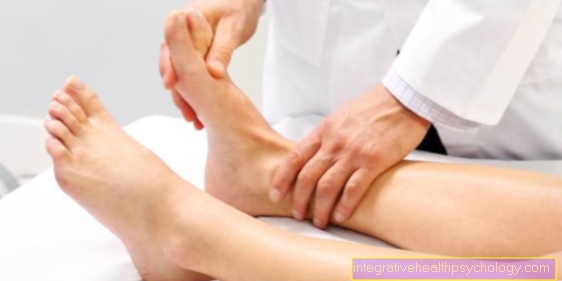



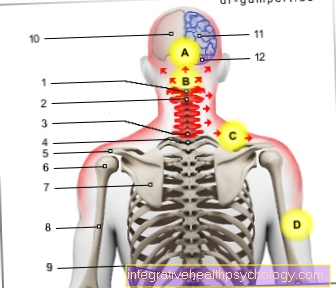

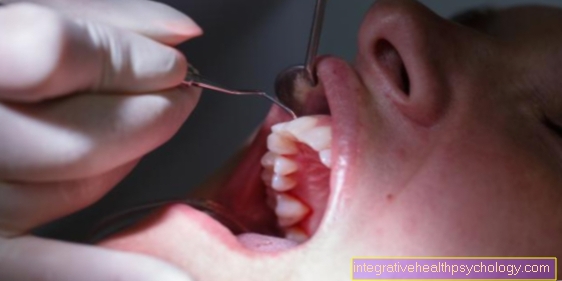

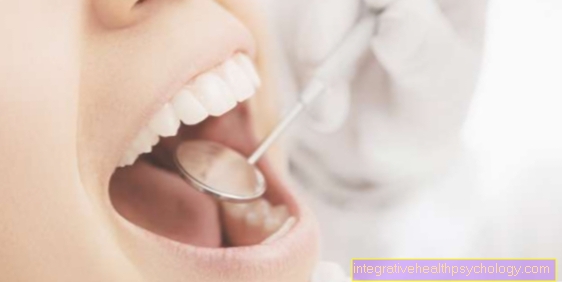
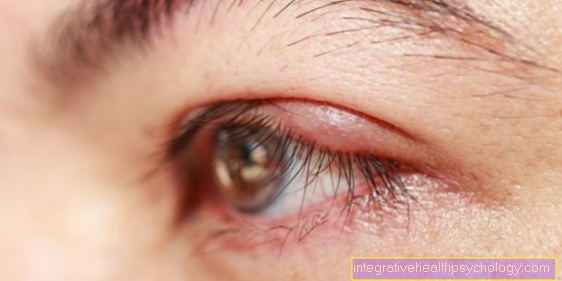

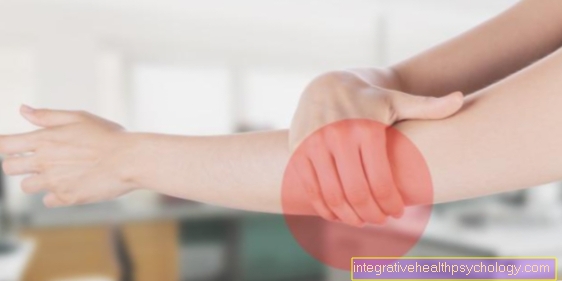

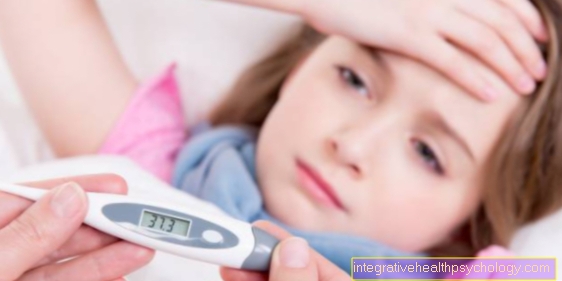




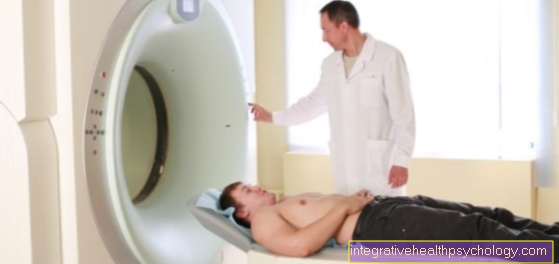



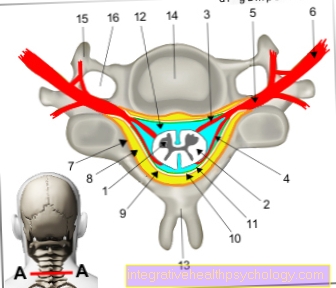
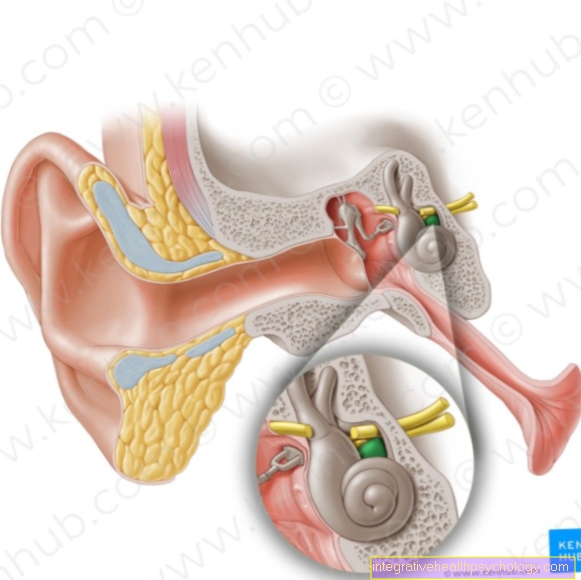



.jpg)